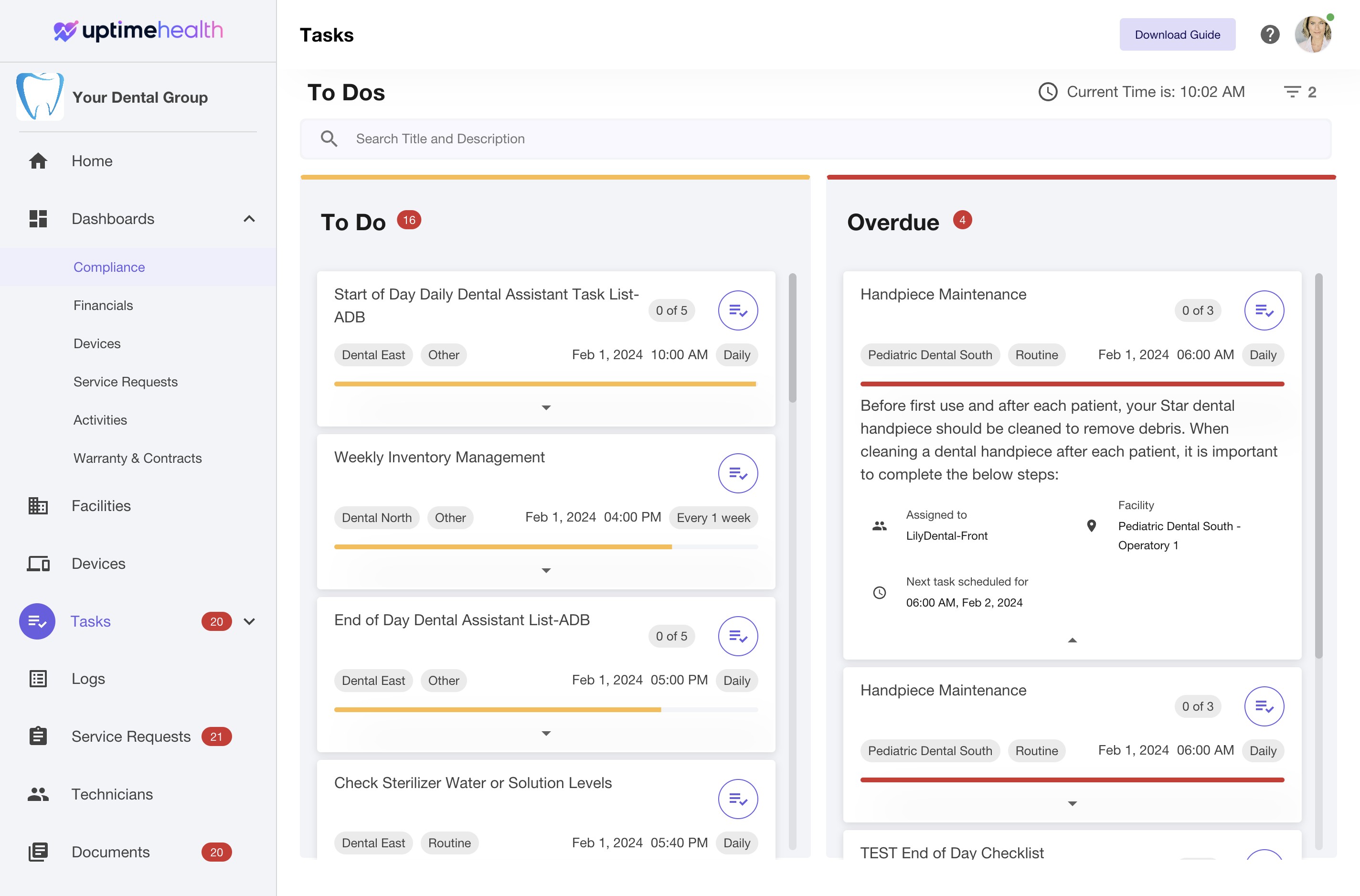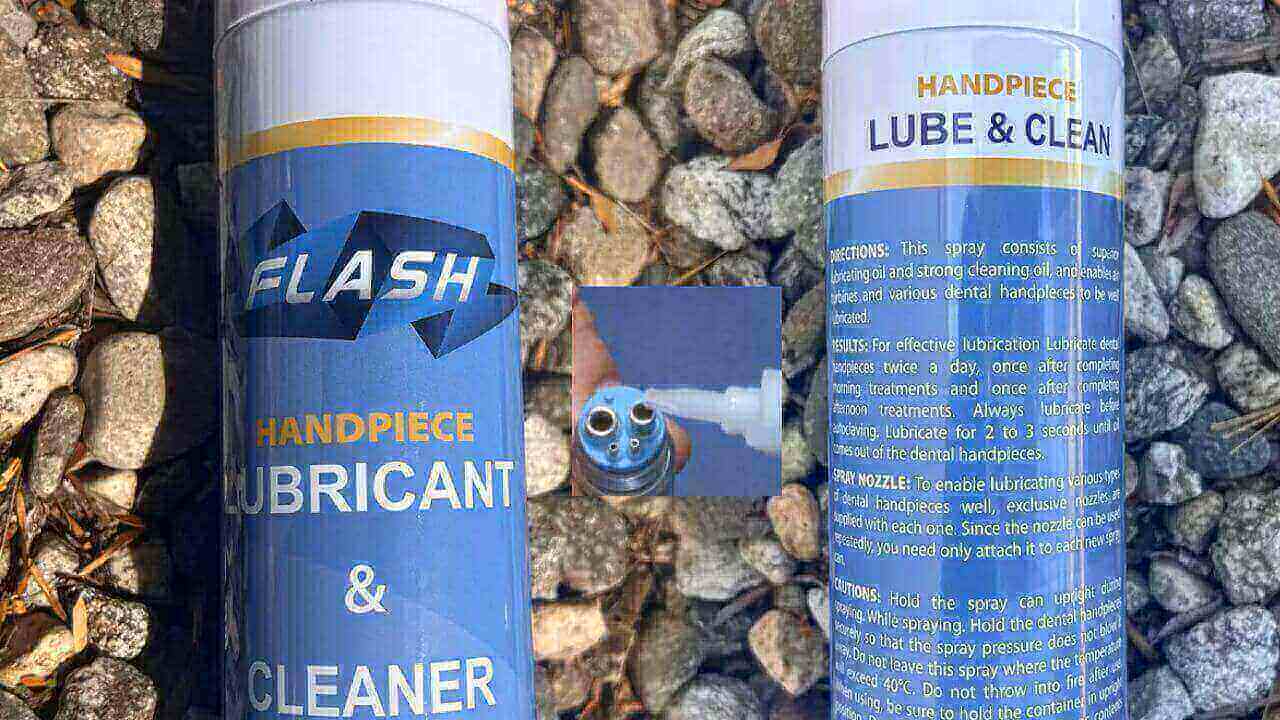When cleaning a dental handpiece, following the manufacturer’s guidelines and using appropriate cleaning solutions is crucial. Ensuring thorough drying after cleaning prevents corrosion and damage to the internal components.
Maintaining dental handpieces is essential for the longevity of the equipment and the safety of patients. These sophisticated tools are integral to a dentist’s practice, and proper care is non-negotiable. Regular and correct cleaning extends the life of handpieces and ensures that they function at their best.
Neglecting this maintenance step can lead to costly repairs and replacements, not to mention the potential risk of cross-contamination. Dental professionals must prioritize the cleaning process, which includes the removal of debris, lubrication, and sterilization, to uphold the highest standards of dental care. It’s a straightforward yet vital practice that underpins the efficiency and hygiene of dental procedures.

Credit: www.ebay.com
Introduction To Dental Handpiece Maintenance
Introduction to Dental Handpiece Maintenance is crucial for any dental practice. These tools are vital for patient care. Proper upkeep ensures they work well and last long. It’s about patient safety, too.
The Role Of Dental Handpieces In Dentistry
Dental handpieces are the workhorses of dental clinics. They perform tasks like cutting, polishing, and cleaning teeth. High speeds and precision make them indispensable. Dentists rely on them daily.
Consequences Of Poor Maintenance
Poorly maintained dental handpieces lead to many issues. They can fail during procedures. This risks patient health. It also increases costs due to repairs or replacements. Regular maintenance is critical.
Pre-cleaning Protocols
Keeping dental handpieces clean ensures patient safety and equipment longevity. Proper pre-cleaning protocols are crucial before sterilization. Dive into the essential steps to decontaminate your dental handpiece effectively.
Decontamination Procedures
Decontamination is the first defence against cross-contamination. Follow these steps:
- Wear gloves and eye protection to prevent exposure to contaminants.
- Wipe the handpiece with a compatible disinfectant wipe to remove debris.
- Use approved cleaning solutions. Check the manufacturer’s guidelines.
- Do not submerge the handpiece in liquid. It can damage internal components.
Handpiece Handling And Preparation
Handle with care:
- Disconnect the handpiece from the dental unit to prepare for cleaning.
- Remove any attached burs or tips.
- Inspect for damage. Look for wear or malfunction.
Preparing the handpiece:
- Use a clean brush to clear out particles from the head and body.
- Lubricate as directed by the handpiece manufacturer.
- Purge air and water lines in the handpiece to remove excess lubricant.
Preparing and decontaminating handpieces correctly is critical to maintaining a safe dental practice.
Manual Cleaning Techniques
Cleaning dental handpieces is crucial for their performance and longevity. Manual cleaning techniques ensure that every part is properly maintained. This section discusses effective methods to clean your dental handpieces manually.
Brushing And Wiping Methods
Brushing is the first step in manual cleaning. Use a soft-bristled brush. Gently scrub the external surfaces to remove debris. It’s important not to force bristles into small openings to avoid damage.
After brushing, wiping is essential. Use a clean, soft cloth. Ensure the fabric is dampened with an approved disinfectant. Wipe all external surfaces to remove any remaining contaminants.
Detergent Selection For Handpieces
Choosing a suitable detergent is critical. Use a non-corrosive, neutral pH detergent. This prevents damage to the handpiece materials. Below is a table of recommended detergents.
| Detergent Name | pH Level | Corrosivity |
|---|---|---|
| CleanDent | 7 | Non-corrosive |
| PureClean | 7.2 | Non-corrosive |
| SafeWash | 6.8 | Non-corrosive |
Always follow the manufacturer’s instructions for the best results. This protects your dental handpieces and ensures they are clean and safe.
Automated Cleaning Systems
Maintaining dental handpieces requires precision and care. Automated cleaning systems offer a modern solution. These systems ensure handpieces are ready for their subsequent use. They provide consistent, thorough cleaning.
Benefits Of Using Automated Cleaners
Automated cleaners streamline the maintenance process. They offer several advantages:
- Time-saving: Staff can focus on other tasks.
- Consistency: Each cycle is the same, avoiding human error.
- Longevity: Proper cleaning extends handpiece life.
- Efficiency: Multiple handpieces cleaned at once.
- Safety: Reduces risk of cross-contamination.
Types Of Automated Cleaning Devices
Different automated cleaning devices serve various needs:
| Type | Function |
|---|---|
| Ultrasonic Cleaners | Use high-frequency waves to remove debris. |
| Thermal Disinfectors | Use heat to sanitize handpieces. |
| Washer Disinfectors | Clean and disinfect using water and solutions. |
Each type offers unique benefits. The choice depends on the dental practice’s specific needs.
Lubrication Necessities
The health of a dental handpiece hinges on regular and efficient lubrication. A well-lubricated handpiece prevents overheating, maintains precision, and extends its lifespan. Understanding the lubrication necessities ensures dental practices can deliver safe and effective treatments.
Choosing The Right Lubricant
Selecting the ideal lubricant is crucial for dental handpiece maintenance. Not all lubricants are equal. The right one will have properties tailored for high-speed dental instruments.
- Compatibility: Ensure the lubricant matches the handpiece specifications.
- Quality: Use only high-grade products designed for dental equipment.
- Viscosity: Opt for a lubricant that’s not too thick or thin.
Proper Lubrication Techniques
To keep a dental handpiece in top shape, apply lubricant with precision. Follow these steps for adequate lubrication:
- Preparation: Clean the handpiece before lubricating.
- Application: Use the correct nozzle to apply lubricant evenly.
- Removal of Excess: Run the handpiece to expel any excess lubricant.
Remember, consistent lubrication is the key to a functional and durable dental handpiece.

Credit: www.uptimehealth.com
Sterilization Procedures
Keeping dental handpieces sterile is crucial in preventing cross-contamination. Let’s explore the best practices for sterilizing these vital tools.
Heat Sterilization Methods
Heat is the most effective way to kill microbes on dental handpieces. There are two main types:
- Autoclaving: This method uses steam under pressure to sterilize at high temperatures.
- Dry heat: An oven-like device sterilizes without moisture at higher temperatures for longer.
Both methods require specific steps:
- Clean the handpiece thoroughly.
- Package it correctly.
- Place it in the sterilizer.
- Run the whole cycle.
Always follow the manufacturer’s guidelines for the correct cycle.
Monitoring Sterilization Effectiveness
Regular monitoring is essential to ensure that a dental handpiece is sterile.
| Monitoring Type | Frequency | Importance |
|---|---|---|
| Biological indicators | Weekly | Confirm sterilization by checking for live spores. |
| Chemical indicators | With each cycle | Show changes in conditions inside the sterilizer. |
| Mechanical indicators | With each cycle | Check temperature, pressure, and time. |
Record results to track the effectiveness over time.
Use these indicators to ensure patients and staff stay safe.
Maintenance Of Dental Handpieces
Dental handpieces are vital tools for any dental practice. Proper maintenance ensures their longevity and reliability. Following a strict maintenance routine is crucial to prevent malfunctions and costly repairs. Let’s explore the best practices for keeping dental handpieces in top condition.
Regular Service Intervals
Sticking to a service schedule is vital for dental handpiece upkeep. Manufacturers often recommend specific intervals for servicing. These intervals depend on usage and handpiece type. Regular maintenance includes cleaning, lubrication, and parts replacement. This keeps handpieces running smoothly and efficiently.
- Clean after each use to remove debris.
- Lubricate according to the manufacturer’s instructions.
- Replace worn components to prevent sudden failures.
Record keeping is also part of regular service. Log each service to monitor the handpiece’s health. This helps in predicting when parts may need replacement. It ensures compliance with service recommendations.
Troubleshooting Common Issues
Even with diligent care, dental handpieces can experience issues. Recognizing common problems helps in quick troubleshooting. Common issues include strange noises, overheating, or reduced performance.
| Issue | Possible Cause | Solution |
|---|---|---|
| Noises | Lack of lubrication | Apply recommended lubricant |
| Overheating | Blocked air vents | Clean vents and check for blockages |
| Low Power | Worn bearings | Replace bearings |
For more complex issues, consult the manufacturer’s manual. Contact a professional service technician if needed. Timely action can prevent more significant problems and extend the handpiece’s life.
Remember, a well-maintained dental handpiece is a reliable partner in dental care. Regular service and quick troubleshooting are the foundations of effective handpiece maintenance.
Legal And Regulatory Compliance
Maintaining legal and regulatory compliance is crucial when cleaning dental handpieces. This ensures safety and efficiency in dental practices. Compliance involves adhering to specific industry standards and maintaining thorough record-keeping.
Understanding Industry Standards
Dental clinics must follow set rules to avoid penalties. These rules ensure that handpieces are safe and work well. The standards cover cleaning methods, the use of approved disinfectants, and the frequency of maintenance.
- ADA guidelines – They give steps to clean and maintain handpieces.
- CDC recommendations – These include sterilization after each patient.
- OSHA regulations – They focus on worker safety during cleaning processes.
Record-keeping And Documentation
Keeping detailed records is a must. They prove you follow all cleaning guidelines. These documents should be easy to access and read.
| Date | Activity | Person Responsible | Notes |
|---|---|---|---|
| 01/10/2023 | Cleaning | John Doe | Used approved disinfectant |
| 02/10/2023 | Sterilization | Jane Smith | Followed CDC guidelines |
These records should include dates, activities, names, and specific notes on the methods used. This helps during inspections or audits.
Training And Education
Proper training and education are crucial for maintaining dental handpieces. Not only does this ensure patient safety, but it also preserves the longevity of the equipment. A structured staff training and continuing education approach can drastically reduce the risk of cross-contamination and equipment malfunction. Let’s explore how dental practices can implement effective training programs and stay updated with best practices.
Staff Training Programs
Staff training programs form the foundation of dental handpiece maintenance. Each team member must know the correct cleaning procedures. This includes disassembling, cleaning, lubricating, and sterilizing the handpiece. Regular training sessions help staff stay competent and confident in their roles.
- Detailed manuals: Provide clear instructions for every step of the process.
- Hands-on sessions: Allow staff to practice under supervision.
- Assessment: Test their knowledge and skills periodically.
Continuing Education For Best Practices
Continuing education keeps dental professionals ahead of the curve. Updates in cleaning technology and protocols are standard. Staying informed is vital to effective handpiece maintenance.
- Attend workshops: These provide insights into the latest techniques.
- Online courses: Convenient for learning new information regularly.
- Professional journals: Read articles on the latest research and studies.
Remember, a well-trained team is essential for a successful dental practice. Invest in training and education to ensure the best patient and equipment care.

Credit: www.dentalez.com
Frequently Asked Questions
How Should Dental Handpieces Be Cleaned?
Begin by wearing protective gloves and eyewear. Remove debris with a brush under running water. Avoid using abrasive materials that can damage handpieces. Dry thoroughly after rinsing. Follow the manufacturer’s instructions for lubrication and sterilization processes.
How To Clean A High-Speed Dental Handpiece?
First, remove debris with a brush to clean a high-speed dental handpiece. Then, lubricate according to the manufacturer’s instructions. Autoclave the handpiece for sterilization. Allow it to cool before use. Always follow the specific cleaning protocol provided by the handpiece manufacturer.
Which Of The Following Methods Is Recommended For Sterilizing The High-Speed Handpiece?
The recommended method for sterilizing a high-speed handpiece is using an autoclave following the manufacturer’s instructions.
Which Of The Following Is The Proper Way To Care For A Handpiece?
Always follow the manufacturer’s cleaning instructions to properly care for a handpiece. Use only approved disinfectants and lubricants. Regularly inspect for wear and service as needed. Store in a clean, dry place. Avoid dropping to prevent damage.
Conclusion
Maintaining a dental handpiece demands attention to detail and precision. By embracing proper cleaning techniques, you ensure the longevity and efficiency of this crucial tool. Remember, patient safety and optimal performance start with impeccable maintenance. Prioritize these practices, and your handpiece will remain a reliable partner in delivering top-notch dental care.

Hello there! I’m here to assist you with health tips and tricks. Whether you’re looking to boost your energy, improve your sleep, or enhance your overall well-being, I’m here to guide you with strategies and frameworks that can empower you to make positive changes.
First and foremost, it’s important to understand that health is a holistic concept encompassing various aspects of physical, mental, and emotional well-being.

